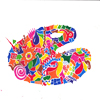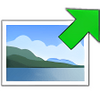Convert raster images to vectors with ease
Convert raster images to vectors with ease
Vote: (1 votes)
Program license: Trial version
Developer: Freefirestudio
Version: 3.86
Works under: Windows
Vote:
Program license
(1 votes)
Trial version
Developer
Version
Freefirestudio
3.86
Works under:
Windows
Pros
- Effortlessly converts raster images to vector format
- Intuitive user interface for ease of use
- Supports industry-standard DXF file output
- Highly accurate and detailed conversion results
- Eliminates the need for manual tracing and digitizing
Cons
- Basic knowledge of CAD principles required for optimal use
- May not cater to every intricacy for extremely complex images
Transform Your Raster Images into Vector Graphics with Ease using TraceART
Introducing TraceART
TraceART emerges as a vital tool for professionals who frequently encounter the need to convert raster images into vector format. Catering to a wide range of users, from architects to graphic designers, TraceART ensures that scanned paper drawings or other raster images are seamlessly transformed into editable vector files. This conversion is not just about changing formats; it's about creating a bridge between the non-editable past and the highly manipulable future of digital designs.
Functionality and Compatibility
At its core, TraceART is a vectorizer that prioritizes accuracy and efficiency. It allows users to quickly import raster file formats, which are then converted to DXF files – an industry-standard in Data Exchange Format. These vector files are compatible with almost any CAD program, supporting users in their various design ventures. By operationalizing this conversion, TraceART effectively eliminates the need for manual tracing, liberating users from labor-intensive digitizing processes.
User Experience
Utilizing TraceART is a straightforward affair. The intuitive interface clears the path for easy navigation and operation, enabling users to focus on the conversion task without being bogged down by a complex toolset. However, users should be prepared to acquaint themselves with basic CAD principles to make the most out of the software's potential. Once familiarized, they'll find themselves modifying and editing converted drawings as if they were native vector creations from their CAD programs.
Conversion Quality and Performance
When it comes to conversion quality, TraceART does not disappoint. It retains a remarkable amount of detail from the original raster images, ensuring that the vectors produced are not just editable, but also true to the source. The performance of the software is robust, handling conversions with swiftness even when dealing with more intricate images. Whether you are aiming to convert technical blueprints or complex graphics, TraceART maintains integrity and precision in its output.
Why Choose TraceART?
The rationale for selecting TraceART boils down to its specialized function as a raster to vector conversion tool. The software saves users inordinate amounts of time and effort that would otherwise be spent on manual redrawing. Its capability to output to DXF format means seamless integration into various CAD workflows, simplifying what was once a convoluted process. TraceART stands as a powerful ally in enhancing productivity and streamlining design revisions.
Pros
- Effortlessly converts raster images to vector format
- Intuitive user interface for ease of use
- Supports industry-standard DXF file output
- Highly accurate and detailed conversion results
- Eliminates the need for manual tracing and digitizing
Cons
- Basic knowledge of CAD principles required for optimal use
- May not cater to every intricacy for extremely complex images




